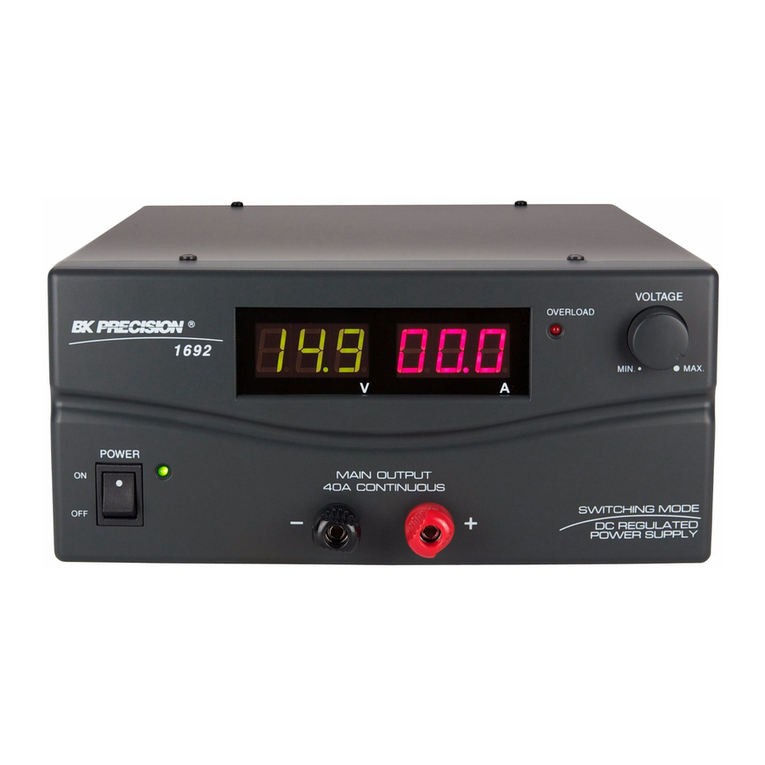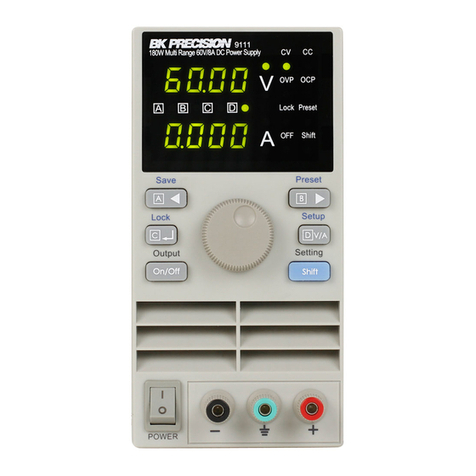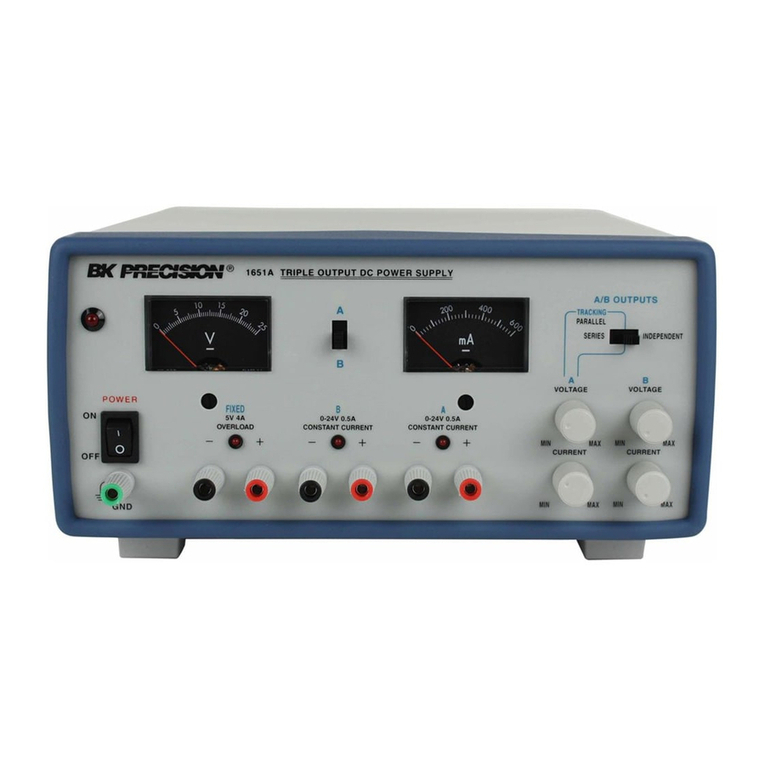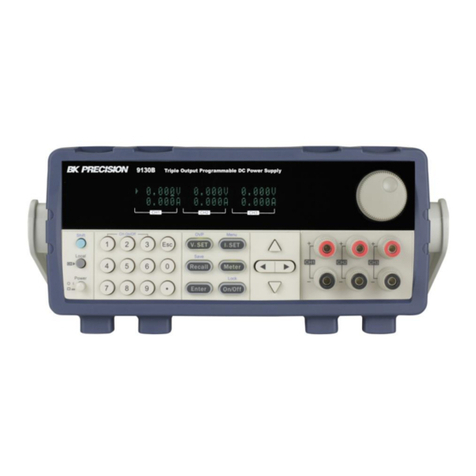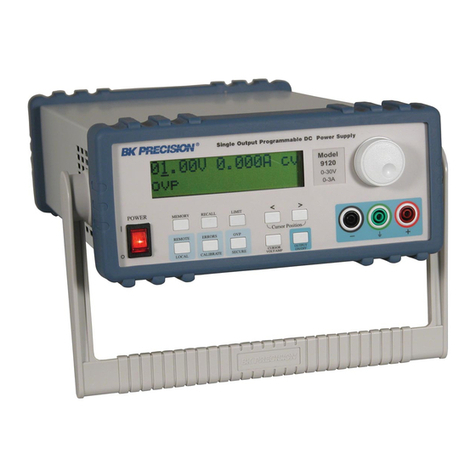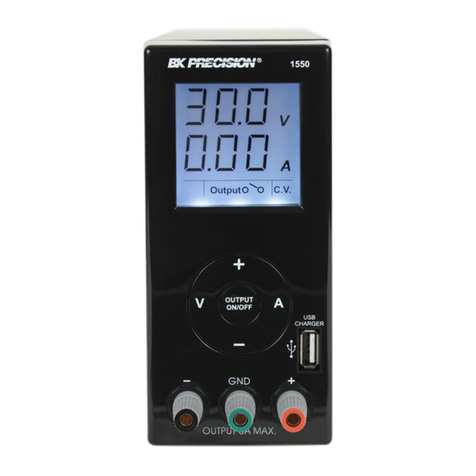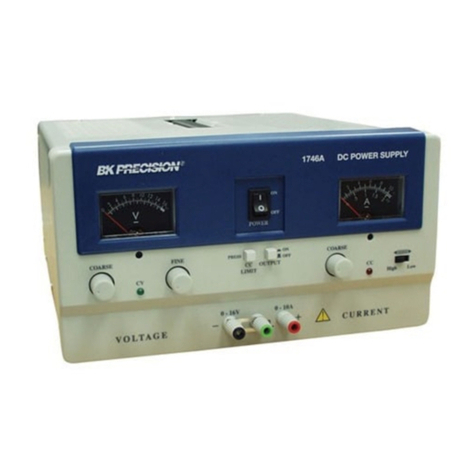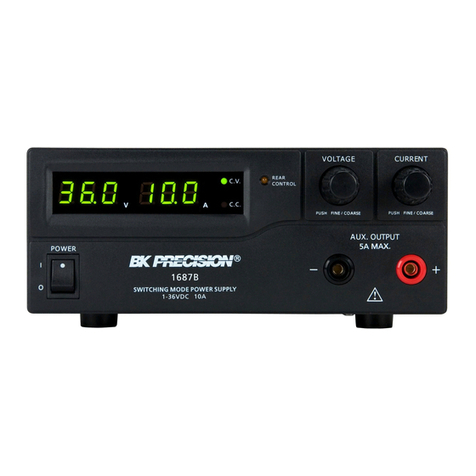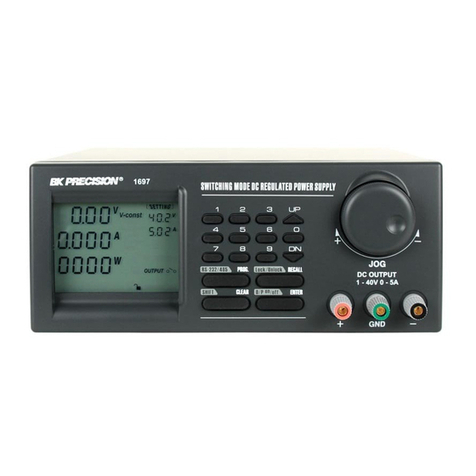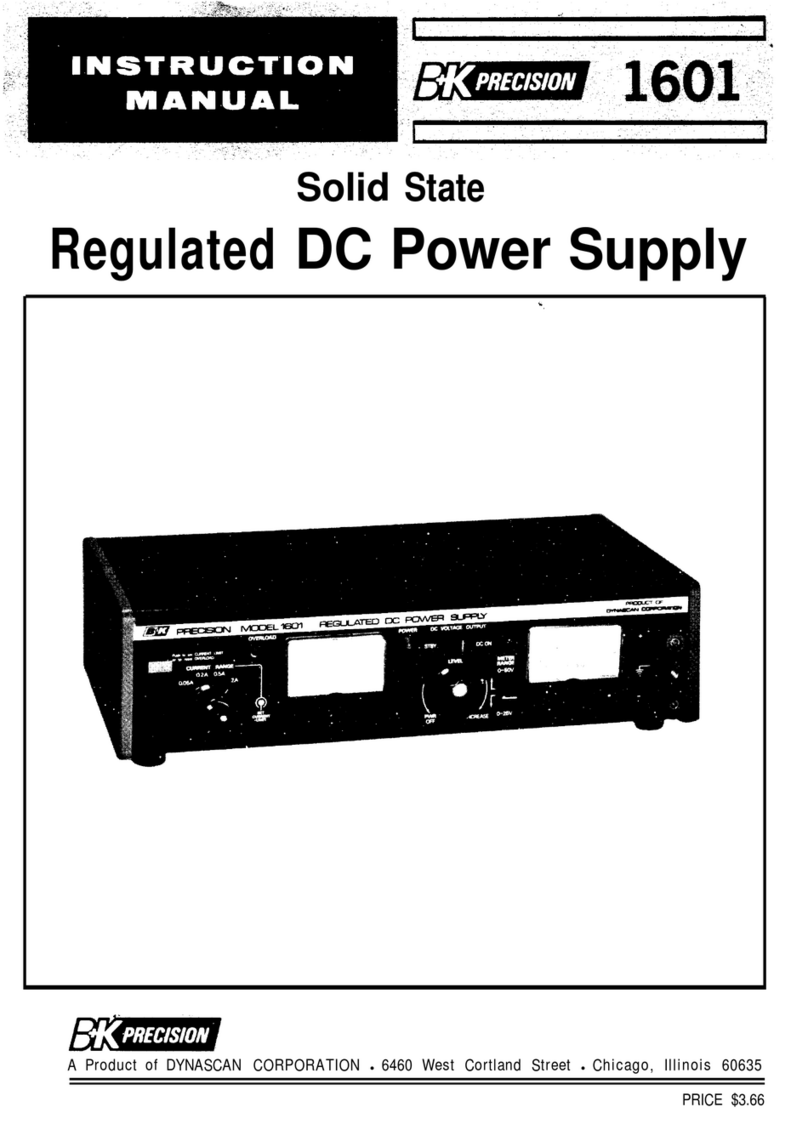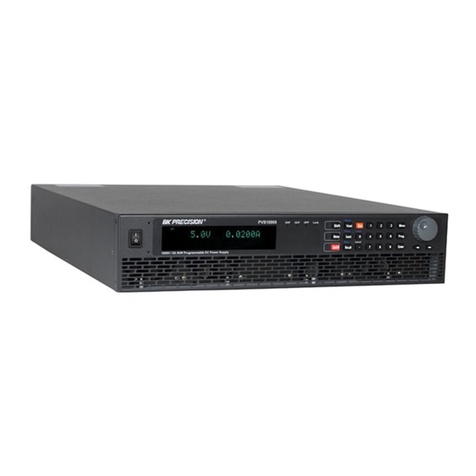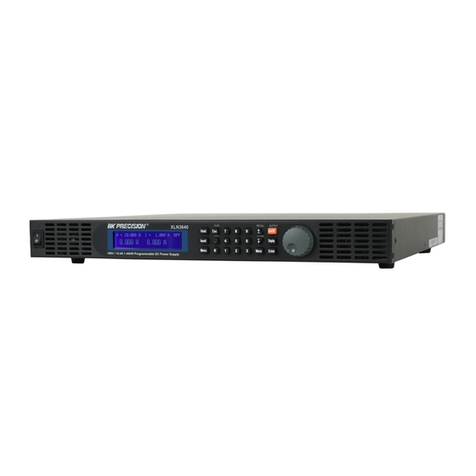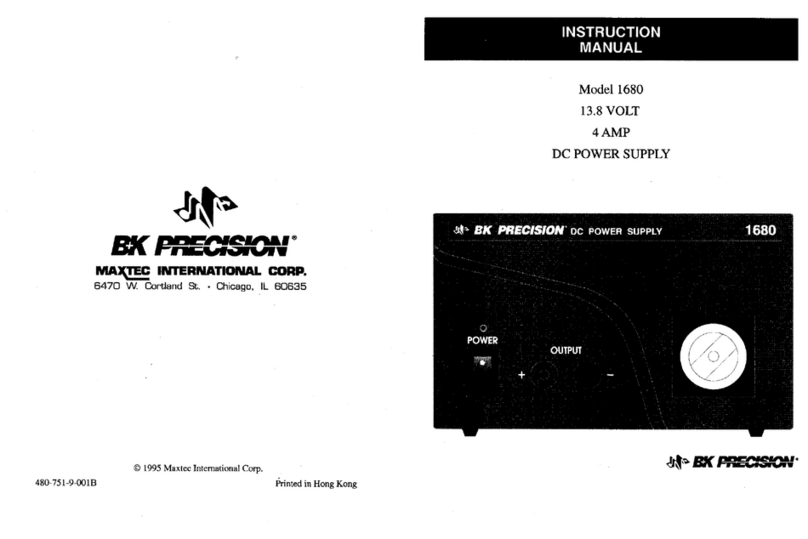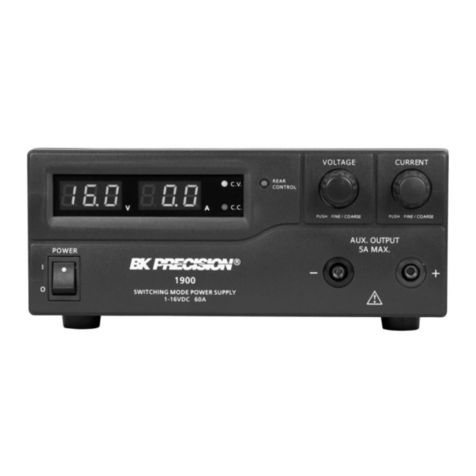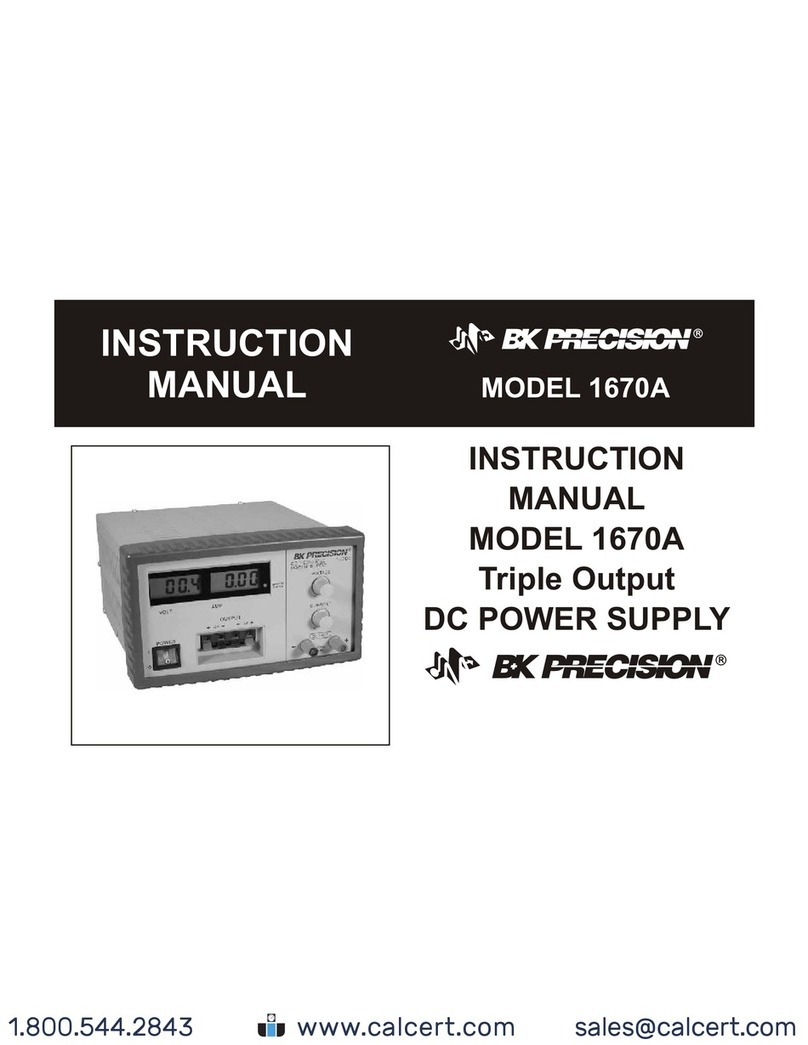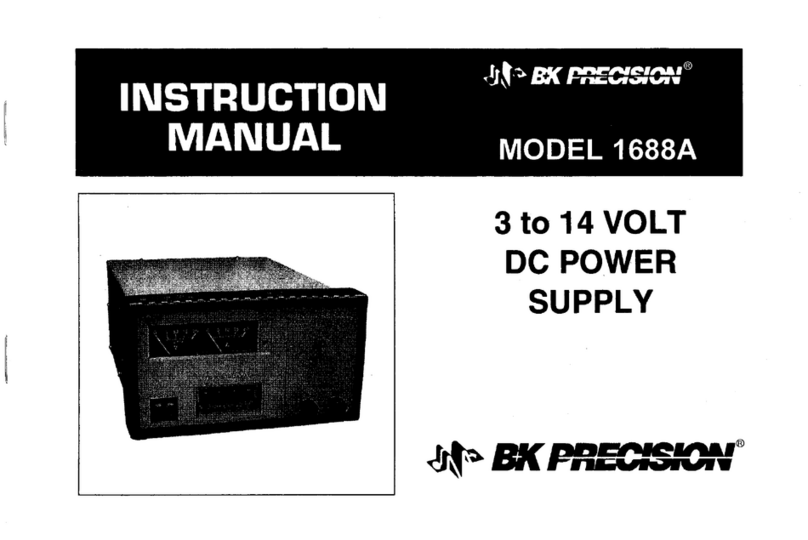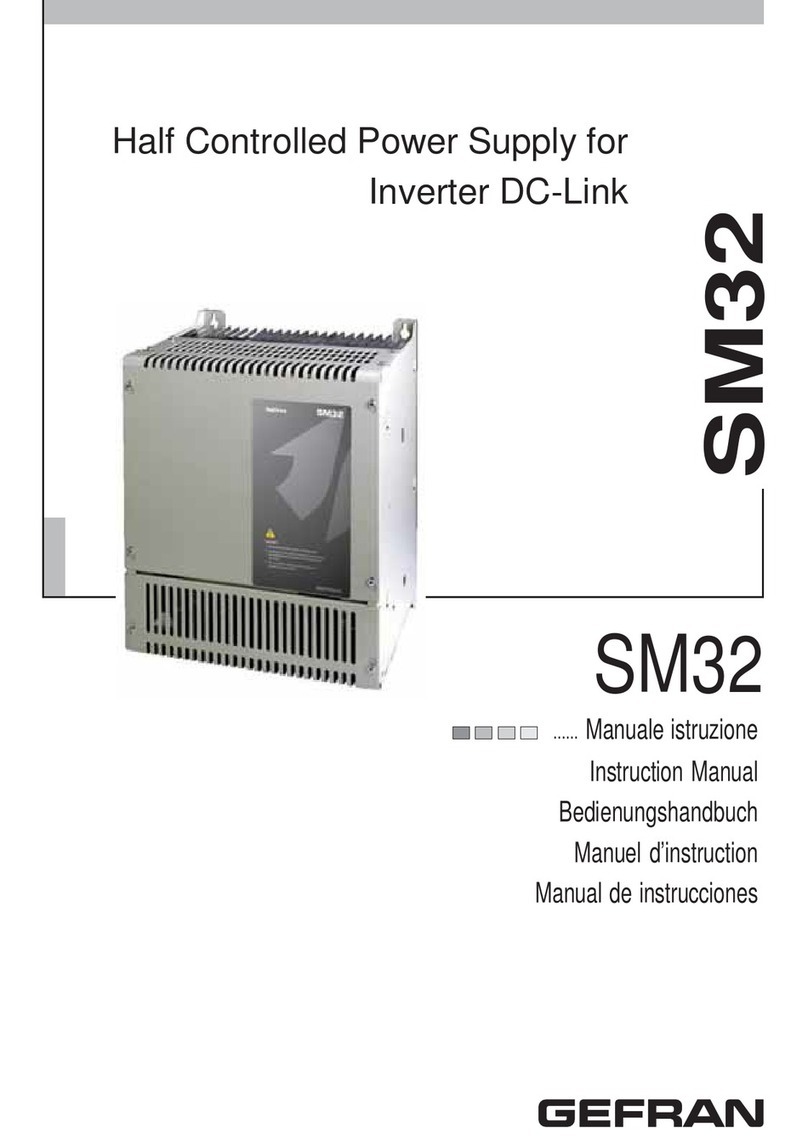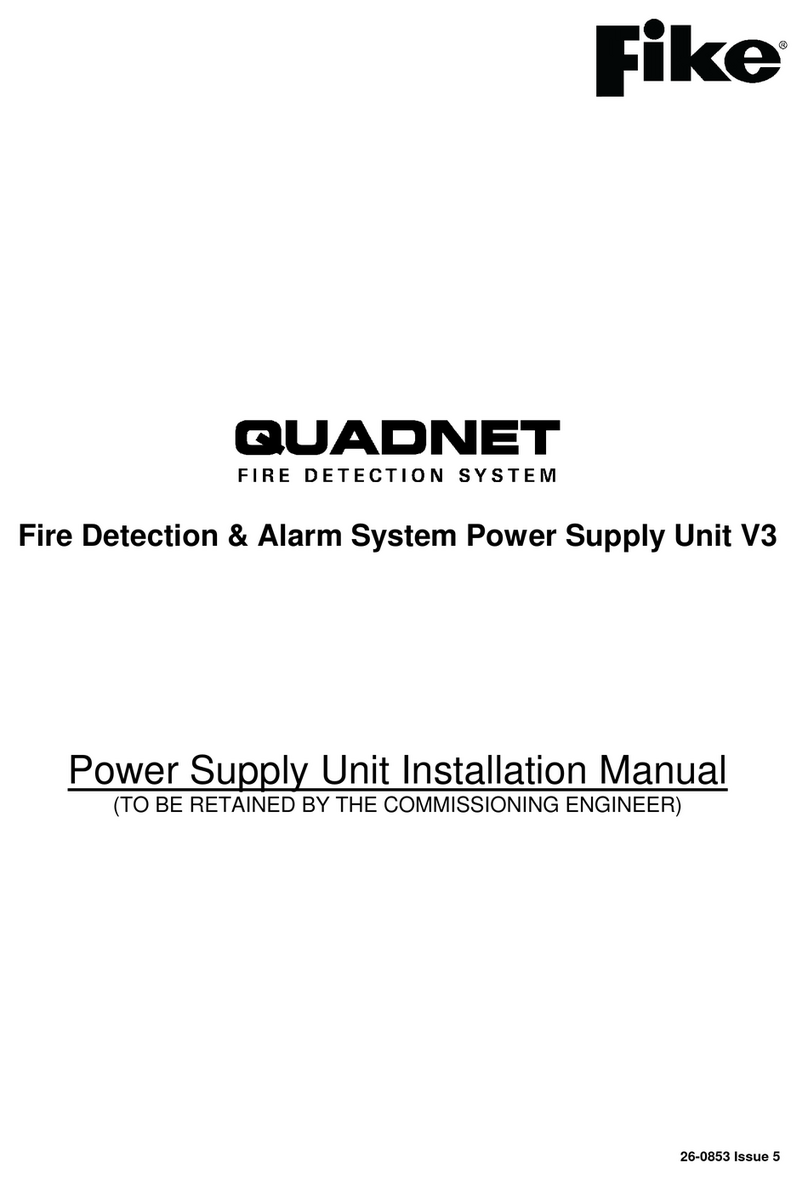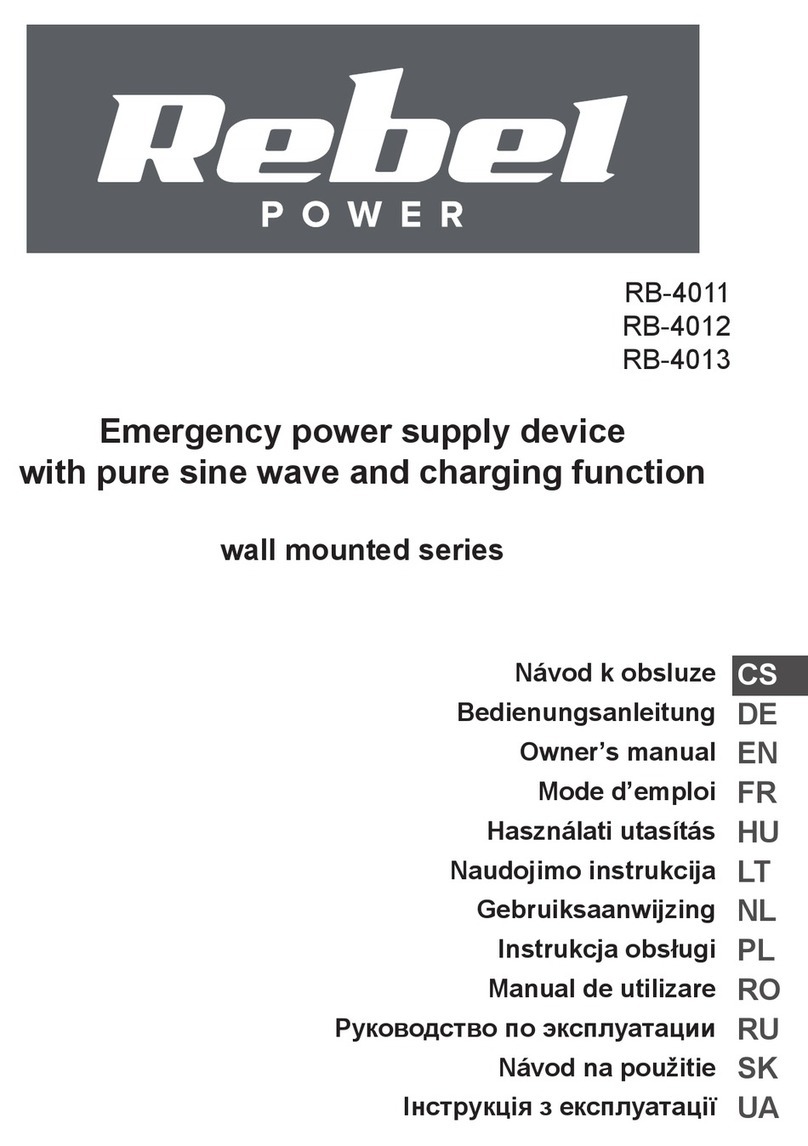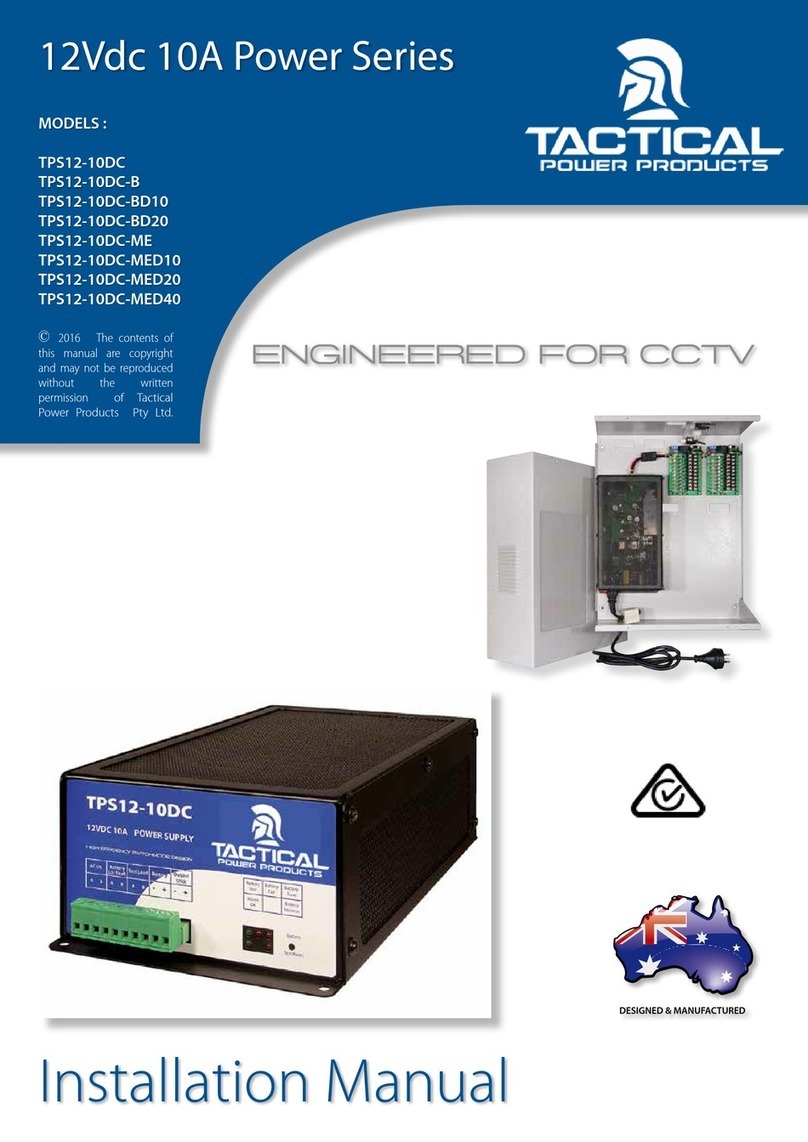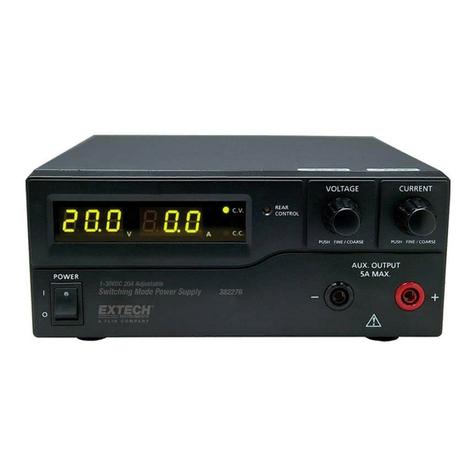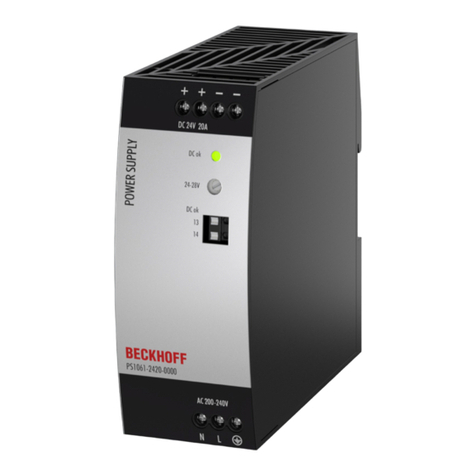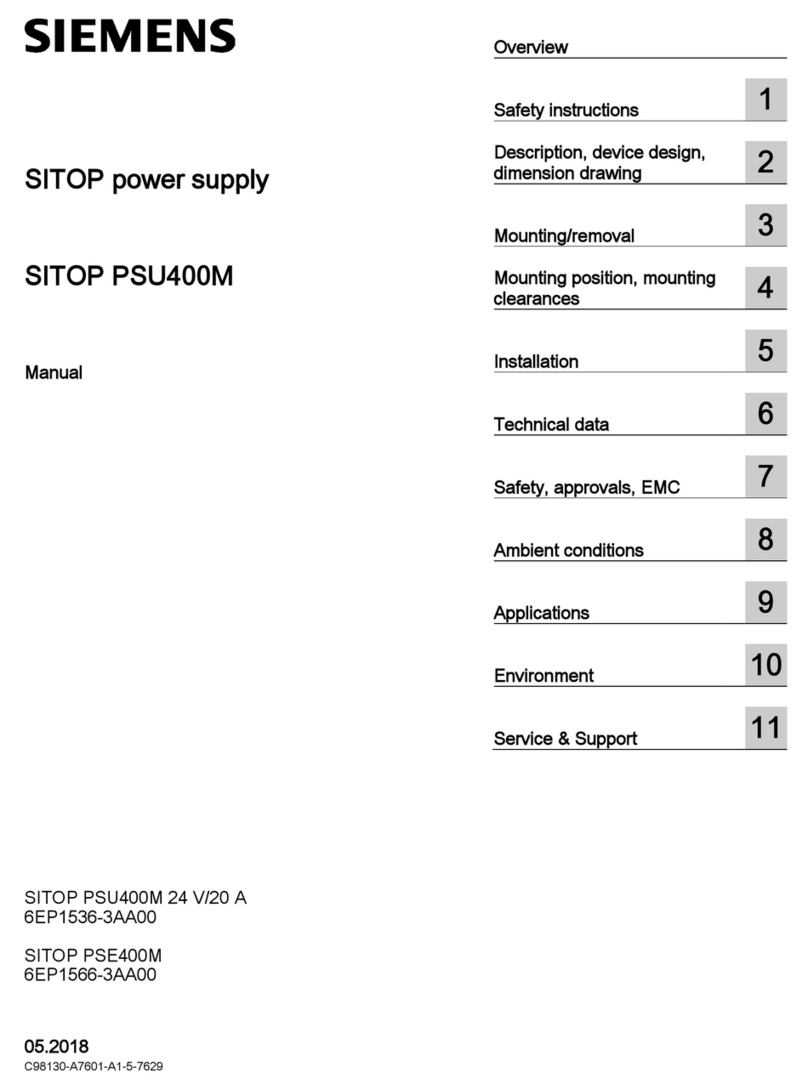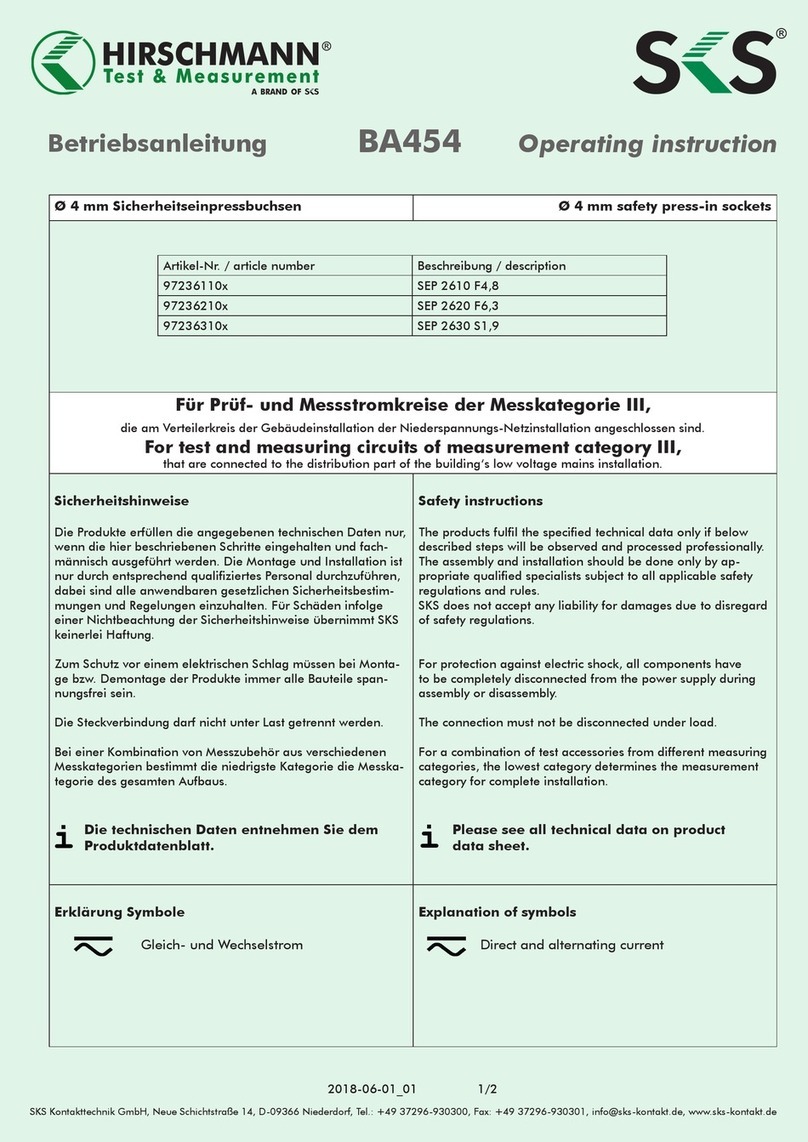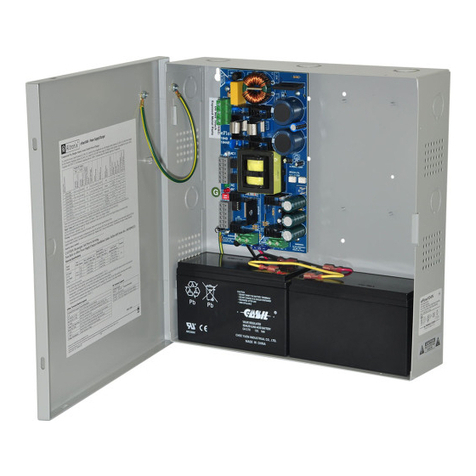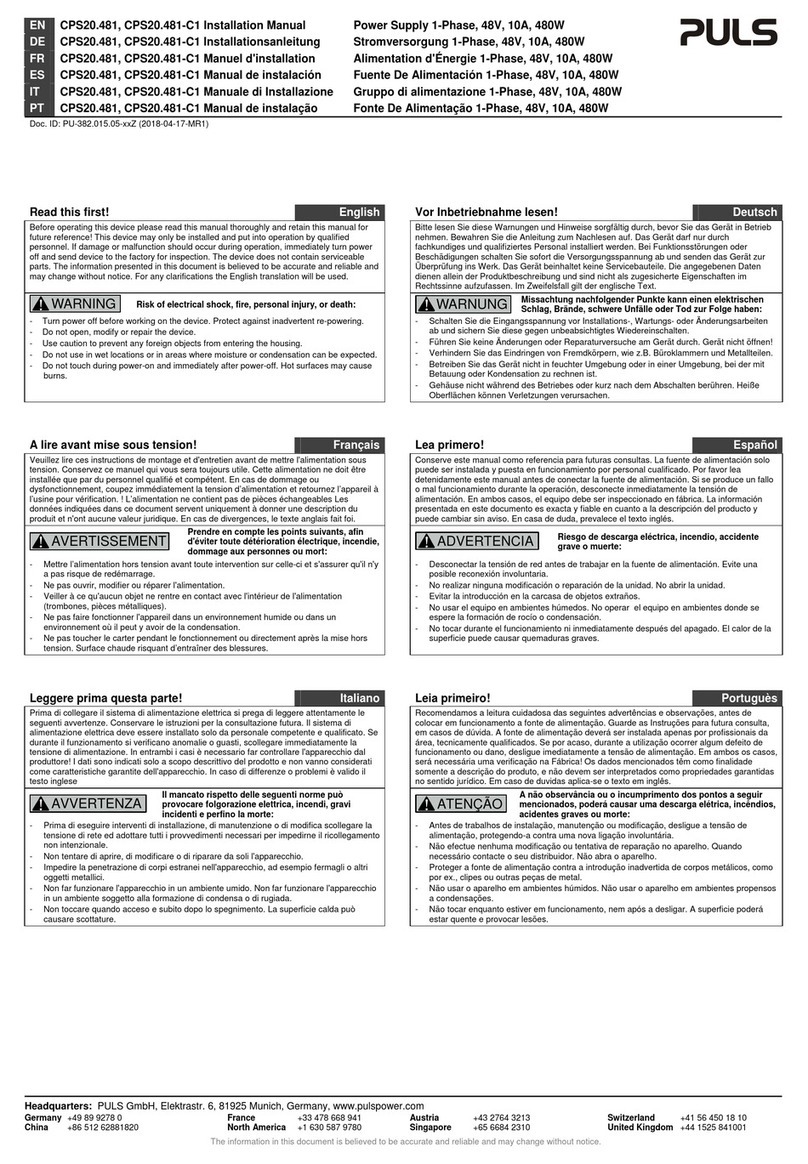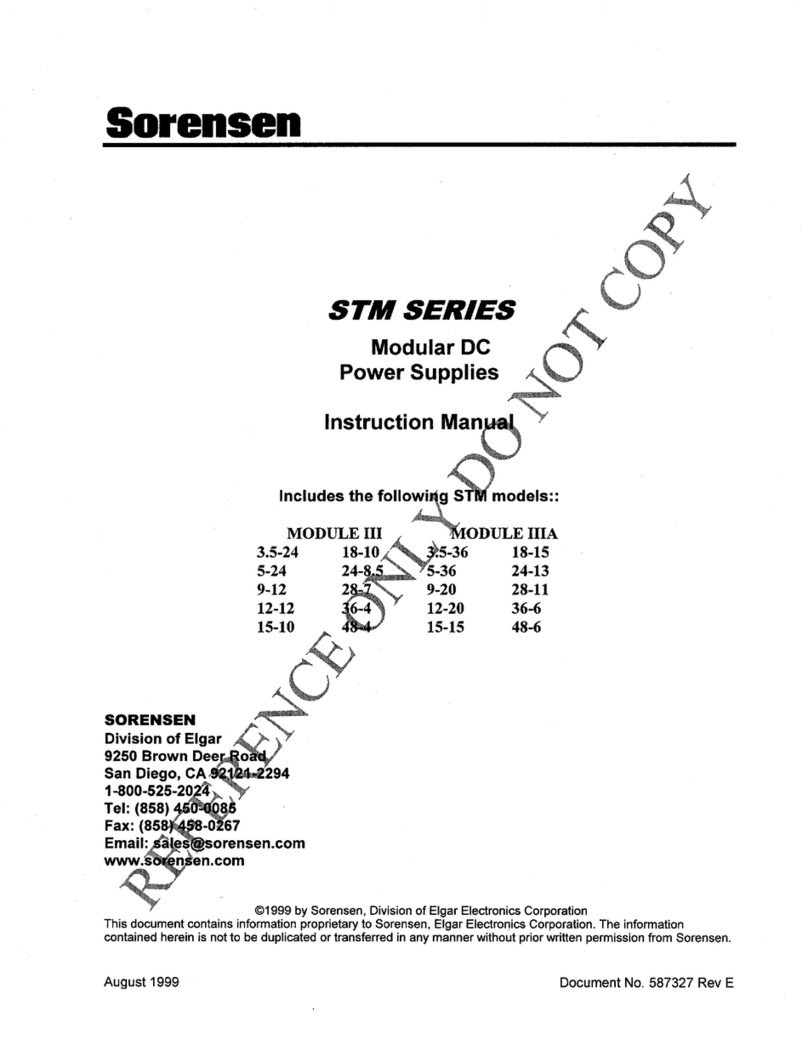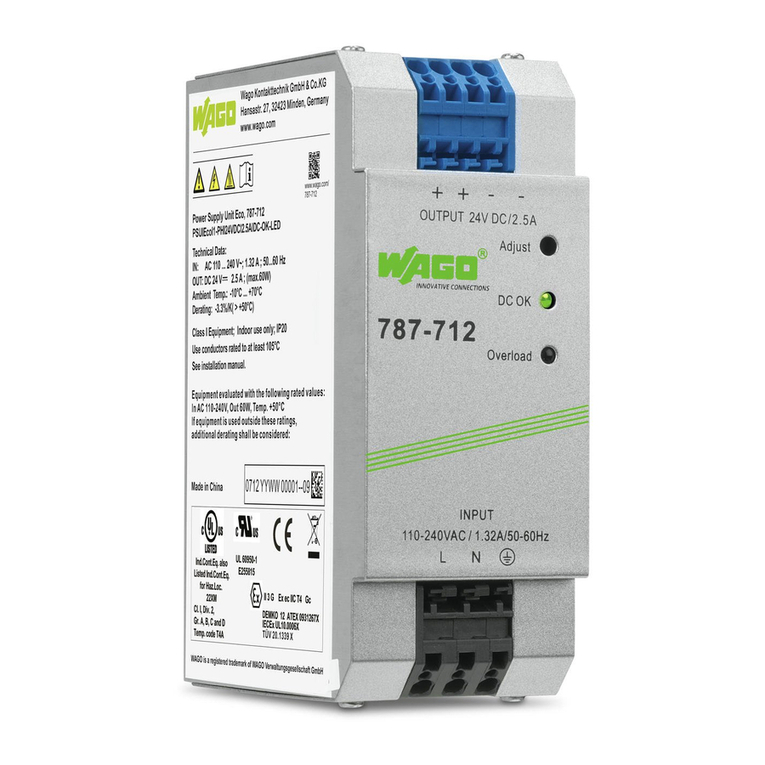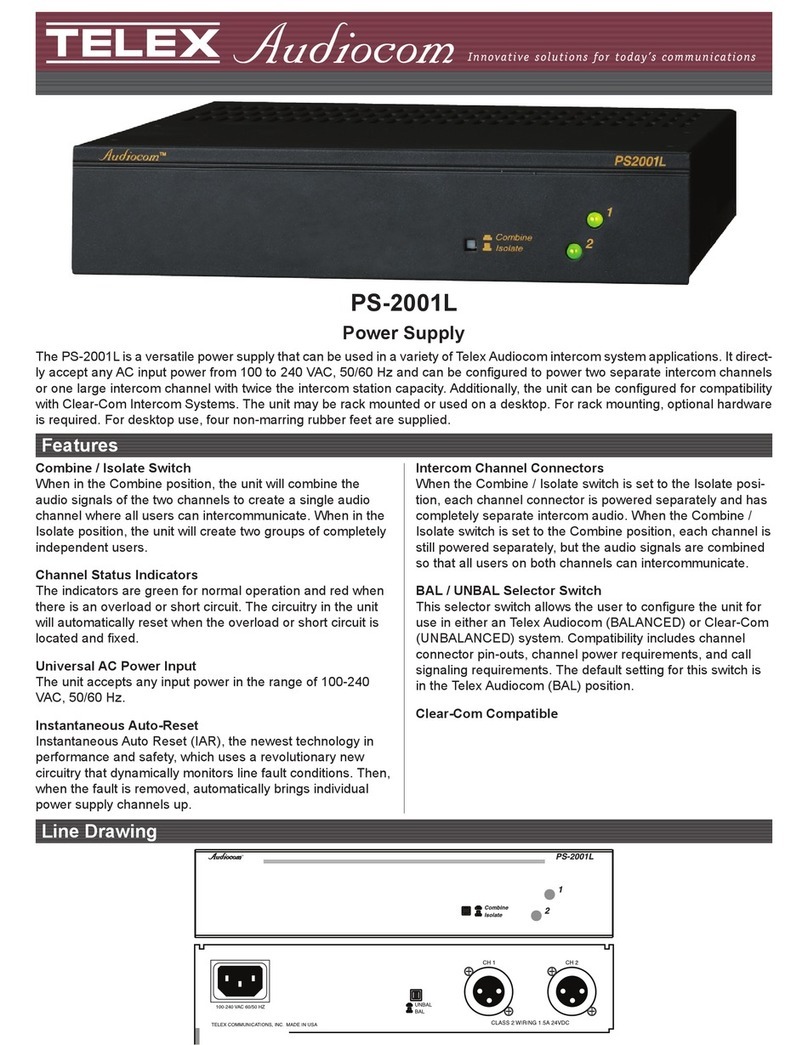C'eneral
The power supply convertsa llTVAC input to a highly
regulatedand filtered DC output that is fully adjustable
from 0 to 400 volts at G200mA at the B+ terminals;
and
G100V at 0-2mA at the C- terminals.The supply also
converts
its AC input to a l2.6VAC center-tappedoutput
at G3.5A. The circuits that accomplish
this action may be
divided
into 4 maingroups
as
follows:
l. Unregulated
DC and AC sources:
Converts
the AC
input to raw DC for the B+ and C- control and filter
circuits;andstepsdowntheAC input for the l2.6VAC
filamentwindings.
2. Control circuits: Control the unregulatedB+ and C-
sources to provide the highly regulated, adjustable
outputs.
3. Current sensingcircuits:Establish
theB+currentlimit,
sensethe B+ load current, and activatean overload
detectorthat shutsdown the B+ supply if the current
limit isexceeded.
4. Metering: Monitors the B+ or C- voltage,and the B+
output current.
Refer
to Fig.7,thefunctional
diagam
and to the schematicdiagram. Circuit descriptions
make
constantreference
to these
diagrams.
NOTE: The voltages
in the following circuit descriptions
and on the diagramsare measured
with respectto the
regulated
B+ output, the + terminal,or the C- output, and
- terminal. Note that thesepoints are floating indepen-
dently of thechassisof thepowersupply.
Unregulated
DCand AC Sources
There are three unregulated
DC sources
and one unregu-
lated AC source in the supply. The most important
unregulated
supply is the B* source.This source
converts
I ITVAC to arawunregulated
B+output. Later,the control
andfilter circuits
convertthisto the regulated
B+ output of
thepowersupply.
The unregulated
B+ output levelis pre-regulated
in coarse
steps.
As the LEVEL control isrotatedclockwise
from zero
to maximum,the unregulated
B+changes
from itslowestto
its highest
value
in four steps.
Thisminimizesthedifference
betweenthe unregulated
B+ and the regulated
B+ output,
whichalwayskeeps
powerdissipationwithin safe
limits.
The main components which make up this circuit are
winding No. 1 of power transformer
Tl, pre-regulator
switch assembly
52, rectifiers D5, 6, 7, 8, and filter
capacitor
C8.
The AC input is applied to the unregulatedB+ circuit
through on-off switch 54 (which is part of the level
control) acrossneonlamp NEI (which glows
continuously
as a pilot lamp to show that power is on) to power
transformer
T1.
Transformer
Tl hasfour taps
in its output windingNo. l.
At the lowestvoltage
setting,
only the low voltage
portion
of the winding is connectedto the rectifiers (this is the
condition shownon theschematicdiagram).
As the LEVEL
control is rotated clockwise,
cams
operate
microswitches
S2C, then S2B, and finally S2A. Each cam-operated
microswitch selectsanother tap on this secondaryof the
transformer and sequentially steps the rectifier input
voltage
to ahighervalue.
Rectifier diodesD5, 6, 7, and8 converttheAC to full wave
DC, which is filtered by C8. The unregulated
!+ output at
C8isregulated
andfilteredby the control circuits.
CIRCUIT DESCRIPTION
")
3.
4.
The C- and CONTROL unregulated
DC sourcesarefairly
standardandstraightforward.
Secondarywinding No. 2 providespower for the com-
parator
ICI andvoltage
reference
and
erroramplifier
IC2.
This supply is designed
to be free of influence from the
unregulated B+ supply. The 20 volt AC output from
secondary
windingNo. 2 isconverted
to +15V and
-15V
by
full wave,rectifiers
Dl and 2. Both the V+ and V- voltages
float with respectto the regulated
output and the unregu-
latedB+supply
variations.
Secondary
windingNo. 3, diodeD9 andCll provide
half
wavefilteredDCfor theC-control andfilter circuits.
B+andC-Control Circuits
The B+ control circuit converts
the unregulated
B+ supply
into the regulated
l+ output voltage.The control circuit
establistresthe regulated
B+ output voltagein responseto
the settingof theLEVEL control R22.WhenR22 isset
for
0volts,thefollowing circuit conditions
exist:
VoltagereferencelCzA provides
astable
+7V reference
atlC2-6.
The +7V reference
is dividedacross
RlO and
Rl l to
place
+3.5Vat pin 4,IC2, the inverting
input of error
amplifierIC2B.
Theregulated
B-voltageis 0V.
The +7V reference
is divided acrosscurrent Path I,
which consists
of R23, Rl2, R30, and R2l (R22 is
approximately 0 ohms at this time). This places
approximately
+3.5V on IC2-5,the non-inverting
input
of erroramplifierlC2-13.
Error amplifier lC2B will producewhateveroutput is
necessary
to keep the differencevoltageat its inputs,
pins 4 and 5, very closetogether.
Therefore,with R22
at about zero ohms,
just enoughdrivewill be applied
to series
pass
regulator
Ql, Q2 to maintaina
zerovolt
B-
output.
The series
pass
transistorsare being slightly drivenat
0V output to avoid non-linearities at low output
voltages
(iumps
in output,
poorregulation,
etc.).
l.
5.
6.
WhenLEVEL control is increased
to a highervoltagelevel
thefollowing circuit actionoccurs:
1. The resistance
of R22 is added
to the voltage
divider
network,decreasingcurrent
I1.
2. The voltageat lC2-5 increases
(less
drop across
R23,
l2), and error amplifierIC2B increases
its output to
driveseries
pass
transistor
Q
l, Q2into heavierconduc-
tion.
3. The regulator
allowssome
of the B+ supply to pass
to
theoutput,and
theoutputvoltagerises.
4. As theoutput voltagerises
theB-supplybecomes
more
negative
with respect
to theB+ terminal.
5. CurrentI increases
asthe B- becomes
morenegative,
and the voltage at IC2-5 decreasesuntil balanceis
achieved.
WhenLEVEL control
R22isdecreased,theoppositeaction
occurs.
Once R22 is setandbalance
is achieved,any load
current changesthat tend to change
the output voltageare
sensed
andcorrected.
ll

















